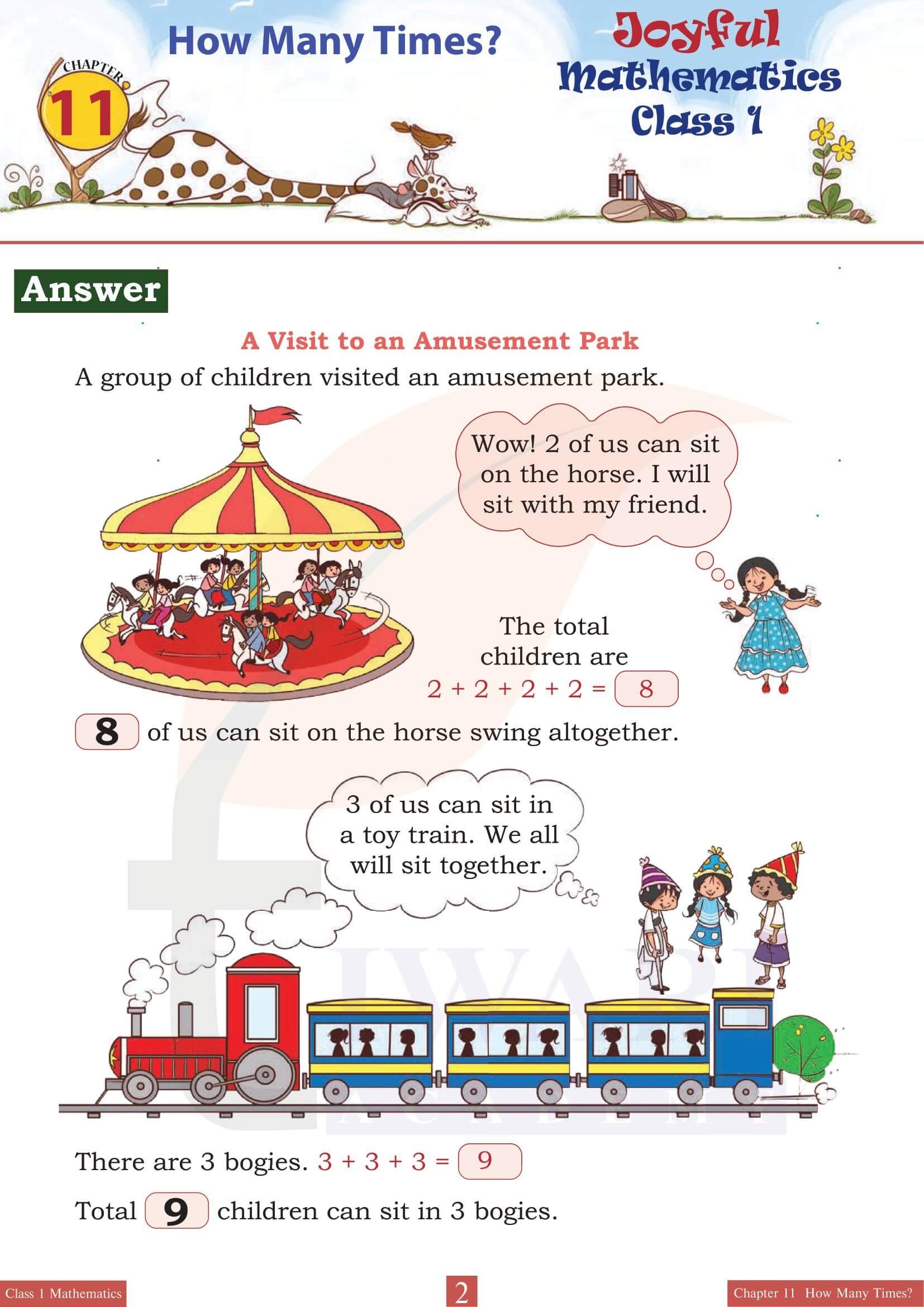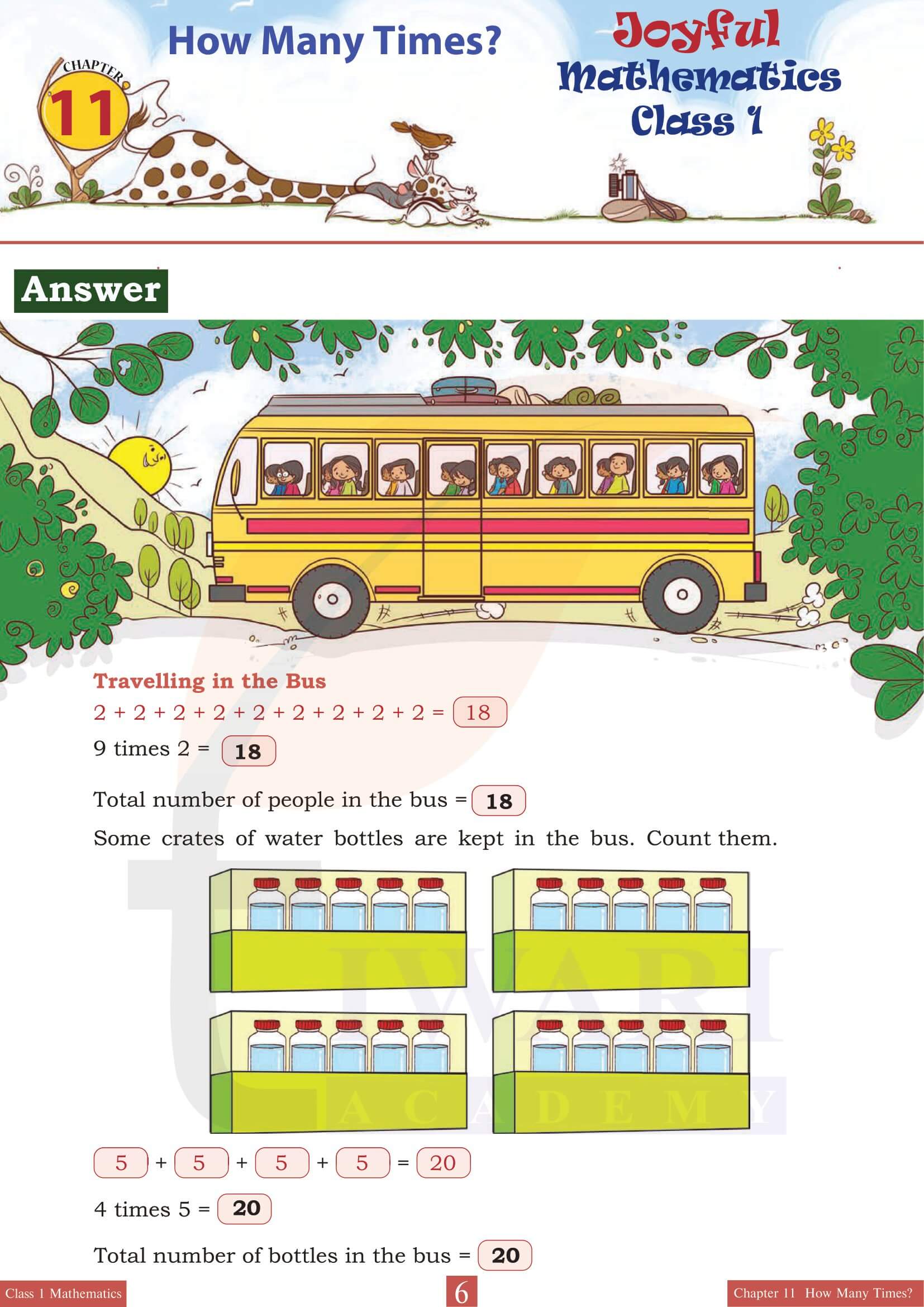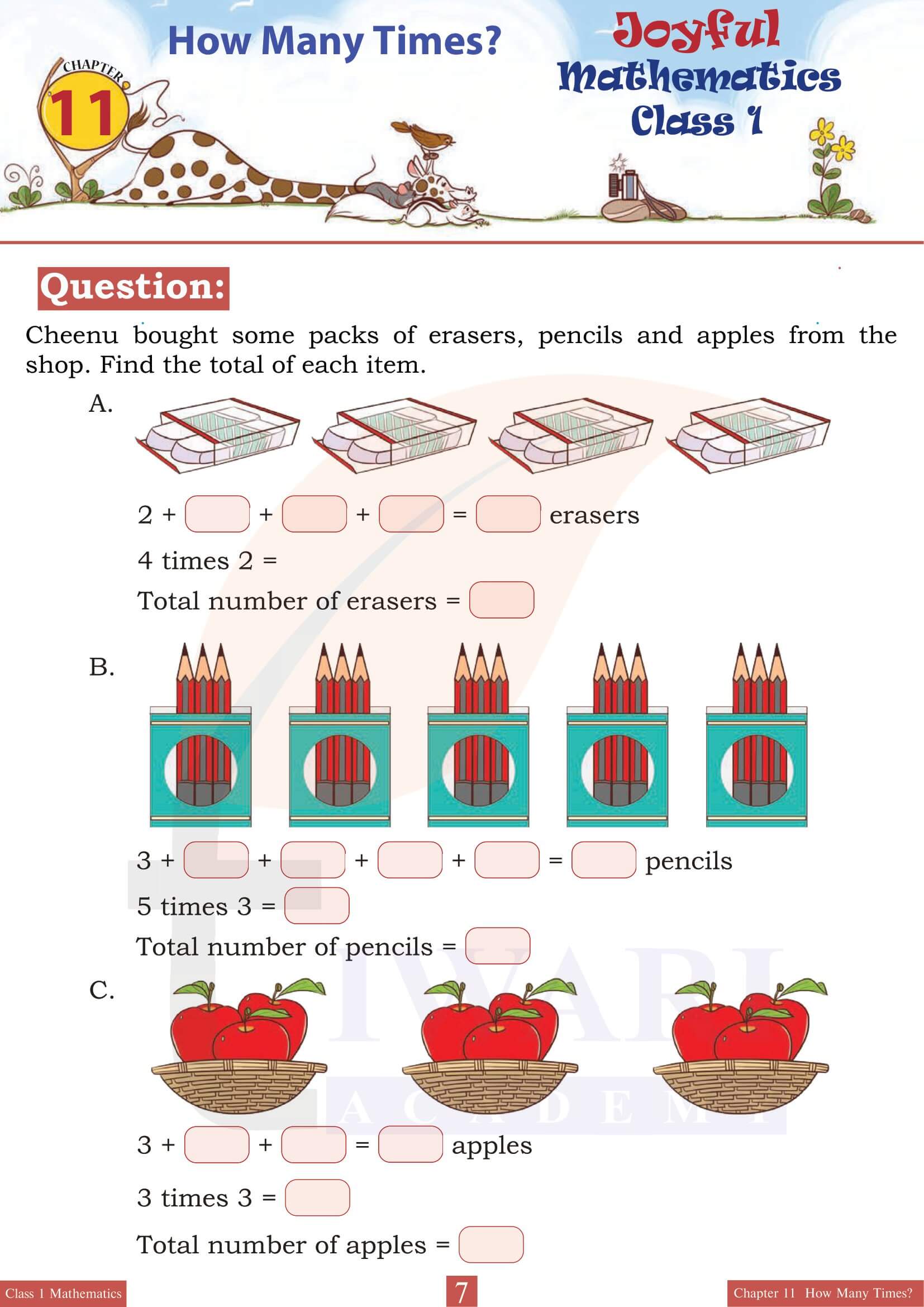NCERT Solutions for Class 1 Maths Joyful Chapter 11 How Many Times? (Multiplication) in Hindi and English Medium updated for academic session 2025-26. Get the explanation and question-answers of class 1 Joyful Maths chapter 11 in simple format easy to learn.
Study Tips for Class 1 Maths
Class 1 Maths Joyful Chapter 11 How Many Times?
Class 1 Maths Chapter 11 How Many Times? (Multiplication)
Class 1 Joyful Mathematics Chapter 11 “How Many Times” from the Class 1 Maths Textbook “Joyful” is designed to introduce young learners to the concept of multiplication as repeated addition, a fundamental mathematical operation. The chapter is meticulously crafted to be both educational and engaging, with the goal of making the learning experience enjoyable for first graders.
Class 1 Joyful Mathematics Chapter 11 of class 1 mathematics, begins with simple, relatable scenarios that naturally lead to the idea of multiplication. For example, it might start with a story about a child who has 2 baskets of apples, with 5 apples in each basket. The narrative guides students to understand that finding the total number of apples is not just about adding 5 twice but can be seen as multiplying 2 (baskets) by 5 (apples in each basket).
Basics of Multiplication for Grade 1 Students
Illustrations play a crucial role in this chapter, providing visual cues that help students grasp the concept of multiplication as repeated addition. Bright, colorful images of everyday objects, like fruits, toys and books, are used to demonstrate multiplication problems. These visuals not only keep the children engaged but also help them visualize the mathematical process, making abstract concepts more tangible.
Activities and exercises are a core component of “How Many Times”. These are carefully designed to reinforce the concept of multiplication through practice. Activities might include counting items in groups, matching groups of objects with multiplication sentences or simple word problems that require students to apply multiplication to solve. The exercises gradually increase in difficulty, ensuring that all students, regardless of their initial skill level, can progress and feel a sense of accomplishment.
Class 1 Maths in Simple Language
The language used throughout the chapter is simple and accessible, avoiding technical jargon to ensure that young learners can easily understand the concepts being taught. The text often poses questions directly to the reader, encouraging them to think and engage with the material actively. This interactive approach fosters a deeper understanding and retains the child’s interest throughout the chapter.
Class 1 Mathematics Chapter 11 emphasizes the real-world application of multiplication, showing students how it can be used in their daily lives. Whether it’s calculating the total number of legs in a group of animals or figuring out how many slices of pizza will be needed for a party, these practical examples help children see the value and purpose of learning multiplication.
Ways to learn Class 1 Maths Chapter 11
To further enhance understanding, “How Many Times” includes tips for parents and teachers on how to support the child’s learning process. These might involve suggestions for simple, fun activities that can be done at home or in the classroom to practice multiplication in a playful and engaging way. For instance, playing games that involve grouping objects or using toys to create scenarios for multiplication practice.
Class 1 Maths Chapter 11 concludes with a summary that recaps the key points, reinforcing the concept of multiplication as repeated addition and its importance. It may also include a preview of how multiplication will be built upon in future chapters, laying the groundwork for continued learning in mathematics.
In essence, “How Many Times” is a thoughtfully designed chapter that introduces first graders to the concept of multiplication in a manner that is both joyful and educational. Through stories, illustrations, activities, and real-world examples, it lays a solid foundation for young learners, making their first encounter with multiplication a positive and memorable experience. The chapter exemplifies the overall approach of the “Joyful” textbook series, which aims to make learning mathematics an engaging and enriching journey for children.










